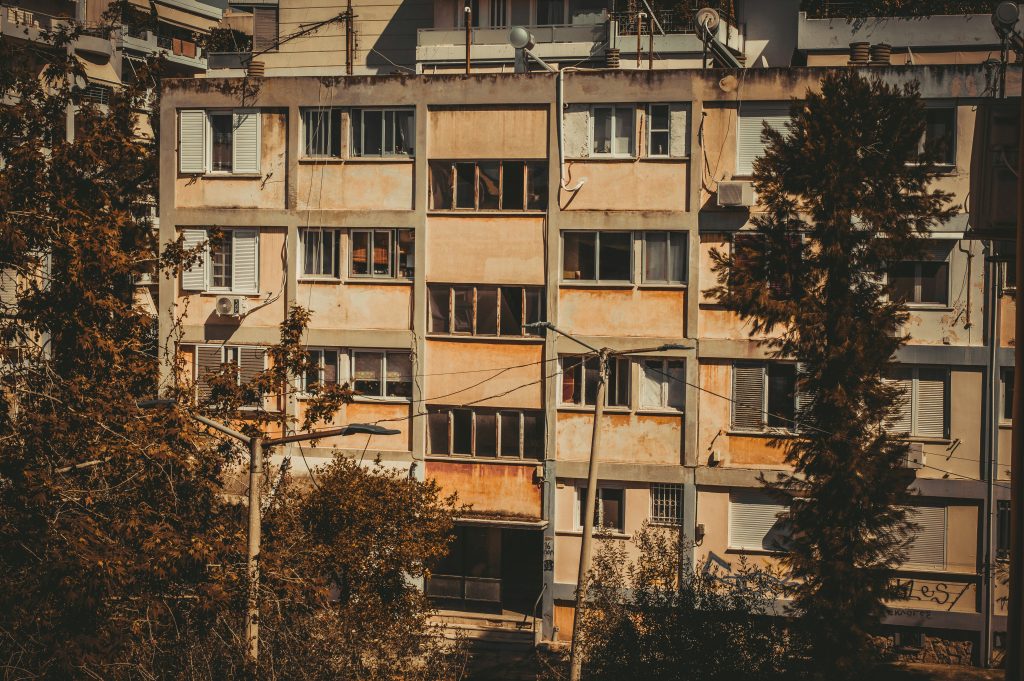Le paquet Fitfor55 améliorera-t-il ou aggravera-t-il la crise du logement ?

Voir le replay
L’exclusion liée au logement se caractérise par des logements inabordables et/ou de mauvaise qualité. La précarité énergétique et l’exclusion liée au logement sont deux des principaux défis auxquels sont confrontés aujourd’hui les ménages en Europe, en particulier ceux qui vivent en dessous du seuil de pauvreté. En 2019, dans l’Union européenne, un ménage pauvre sur cinq vivait dans un logement froid. 7 % de la population totale
et 18 % de la population pauvre n’avaient pas les moyens financiers de chauffer correctement leur logement. Le coût de l’énergie dans les logements inefficaces et de mauvaise qualité est disproportionné. Pour ceux
qui ne peuvent pas couvrir leurs frais d’énergie et de logement, les répercussions sur les conditions de vie sont énormes, avec des conséquences négatives sur la santé, la famille et la vie sociale.
La vague de rénovation est un élément essentiel du nouveau pacte vert pour l’Europe, car environ 75 % des bâtiments de l’UE ne sont pas efficaces sur le plan énergétique, alors que 85 à 95 % des bâtiments actuels seront encore utilisés en 2050. Cette stratégie vise à doubler les taux annuels de rénovation énergétique au cours des dix prochaines années.Le paquet législatif « Fit for 55 » jettera les bases de la vague de rénovation et, plus largement, créera le cadre permettant à l’UE d’atteindre son objectif de réduction des émissions de 55 % d’ici 2030. La première partie du paquet « Fit for 55 » a été publiée le 14 juillet 2021. Il comprend des propositions publiées sur l’extension du système européen d’échange de quotas d’émission (SEQE) aux bâtiments, la refonte de la directive sur l’efficacité énergétique (EED) et le règlement instituant un Fonds social pour le climat. La révision de la directive sur la performance énergétique des bâtiments (EPBD) sera publiée en décembre 2021, ainsi que la recommandation du Conseil sur la meilleure manière de prendre en compte les aspects sociaux et liés à l’emploi de la transition climatique.
Si l’UE prend les bonnes décisions, la vague de rénovation souhaitée est une promesse de transition et une opportunité sans précédent pour la justice sociale. La vague de rénovation pourrait créer une situation gagnant-gagnant : lutter contre l’exclusion en matière de logement et lutter contre le changement climatique. Elle pourrait rénover des logements insalubres, créer des conditions de vie décentes et sortir des millions de personnes de la précarité (énergétique).Néanmoins, la vague de rénovation comporte des risques en termes d’augmentation des coûts de l’énergie et du logement. Les coûts de la transition dans les foyers européens ne peuvent être supportés par les plus vulnérables. Il
existe un risque réel que la vague de rénovation contribue à accroître l’exclusion en matière de logement et même à aggraver le niveau déjà alarmant du sans-abrisme.
La question urgente est la suivante : « Comment concevoir une vague de rénovation qui ne laisse personne de côté ? ». Ce débat est l’occasion d’échanger sur les risques d’exclusion liée au logement inhérents aux propositions législatives actuelles
et de partager des idées concrètes sur la manière d’y remédier.
programme
Programme :Mot de bienvenue de la Fondation Abbé Pierre et de la FEANTSA et discours d’ouverture – Quels aspects du paquet « Fit for 55 » actuel sont susceptibles de renforcer l’exclusion liée au logement ?
Première table ronde – Afin de faire du paquet « Fit for 55 » une opportunité pour lutter contre l’exclusion en matière de logement, quelles mesures concrètes et garanties sociales devrions-nous demander pour atteindre les plus vulnérables et garantir que les ménages pauvres soient ciblés/prioritaires dans les politiques et les développements en matière de rénovation énergétique ?
Louise Sunderland (Regulatory Assistance Project – Right to Energy Coalition)
Emmanuelle Causse (UIPI – Forum européen du logement)
Sarah Coupechoux (Fondation Abbé Pierre)
Serena Pontoglio (Commission européenne – DG ENER) (à confirmer)
Questions-réponses avec le public
Deuxième table ronde – Comment financer la transition prévue dans le secteur du bâtiment afin de garantir une transition véritablement « juste » ?
Camille Defard (Institut Jacques Delors)
Guillaume Joly (BEUC – Organisation européenne des consommateurs)
Philippe Pelletier (FR – Plan Bâtiment Durable)
Questions-réponses avec le public
Conclusions de Freek Spinnewijn (FEANTSA)

